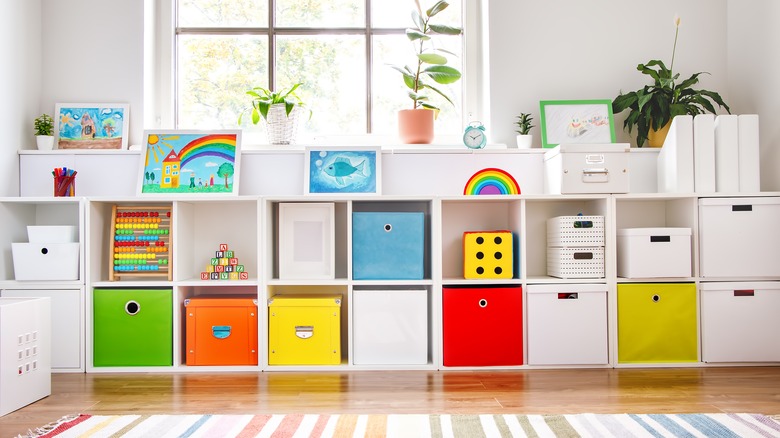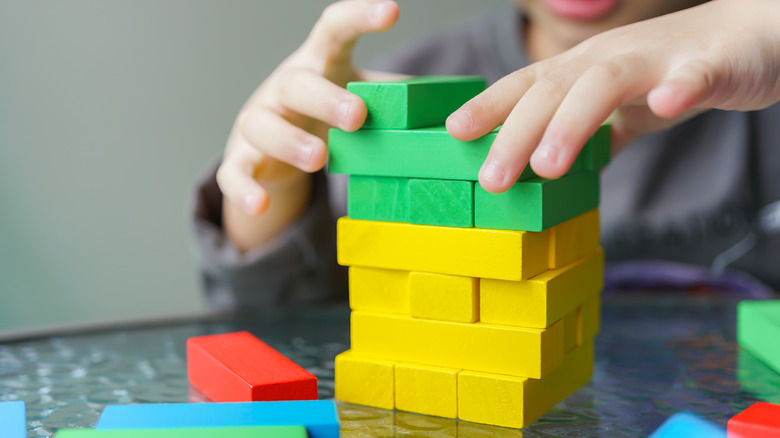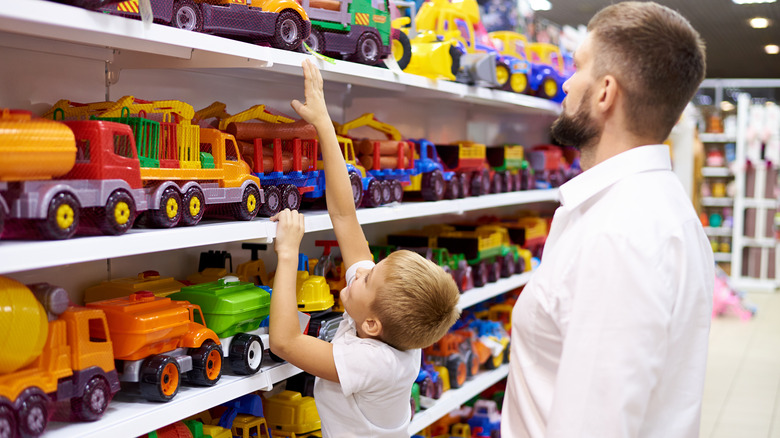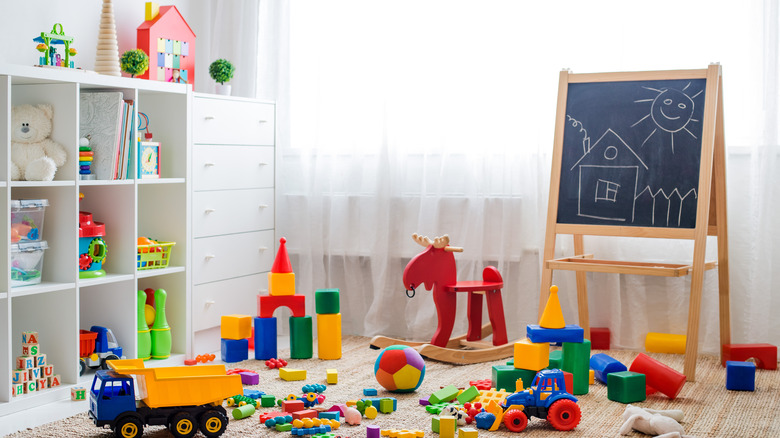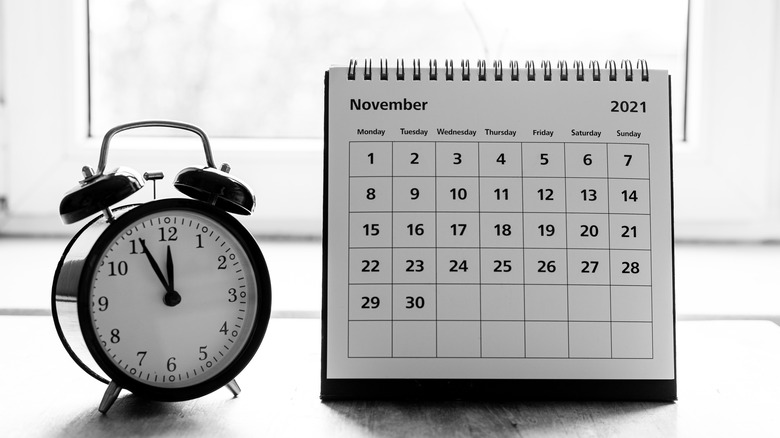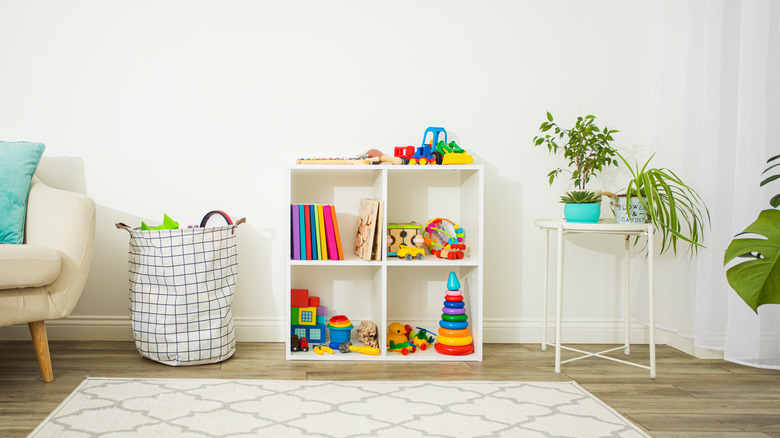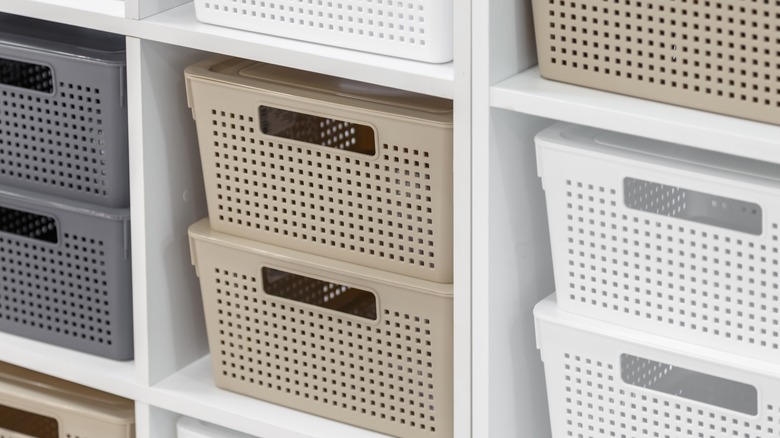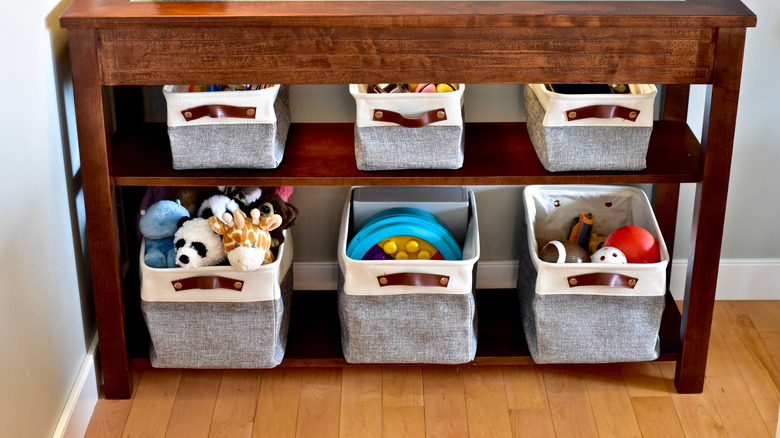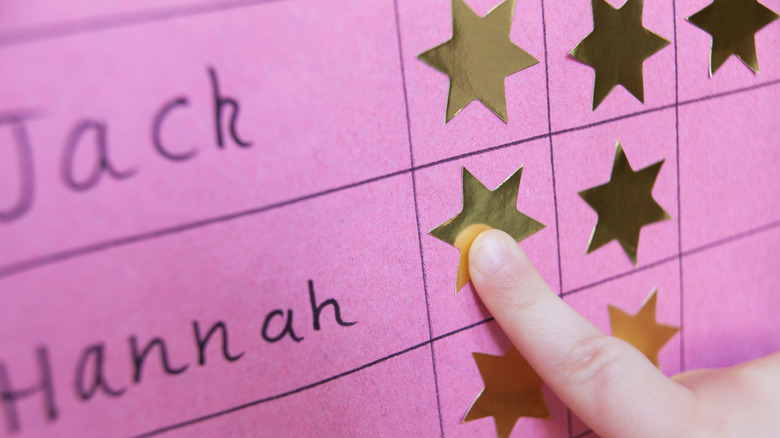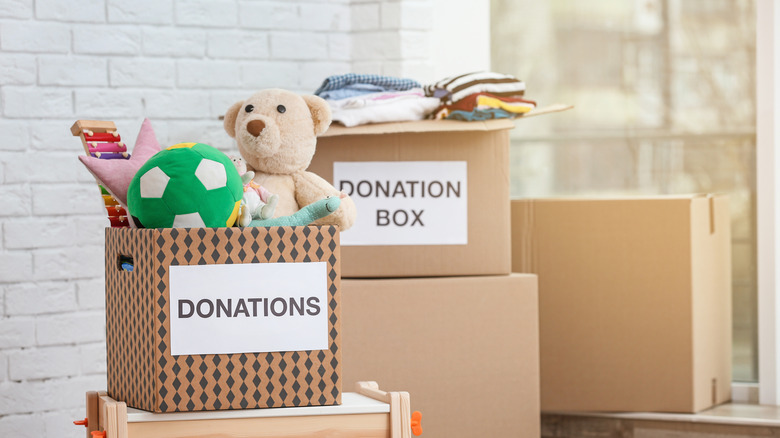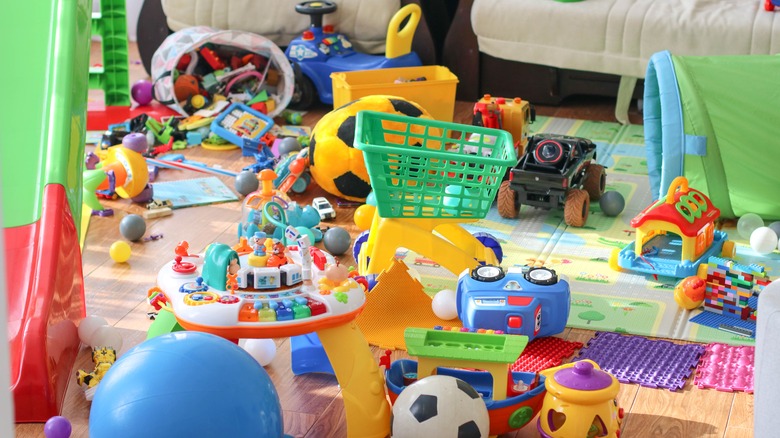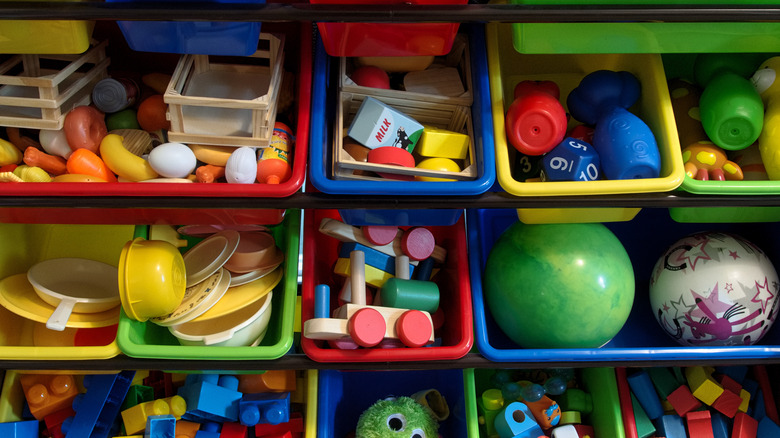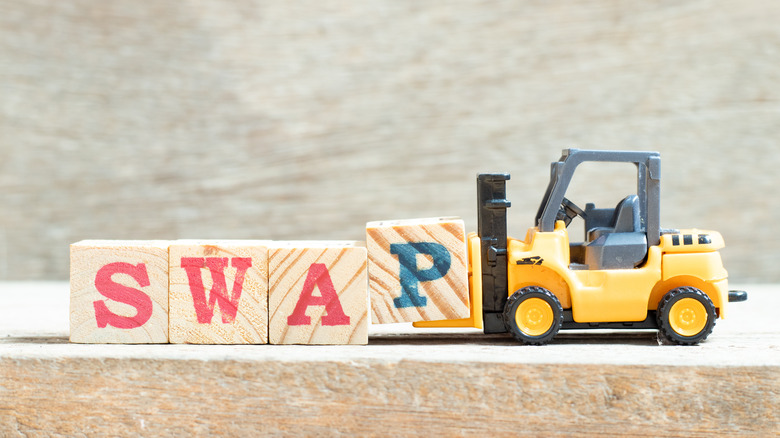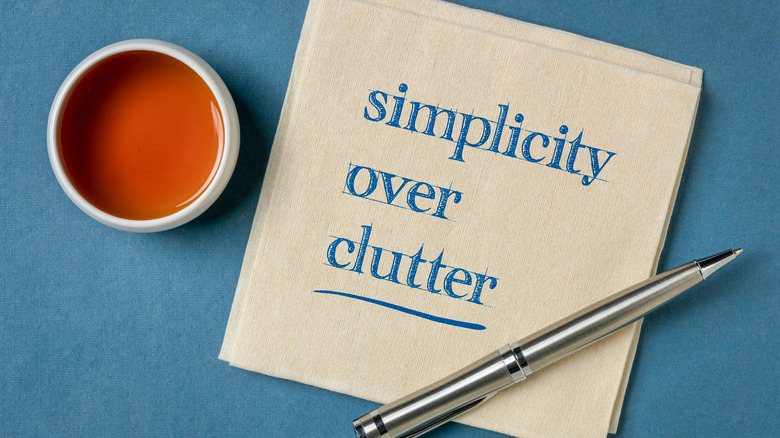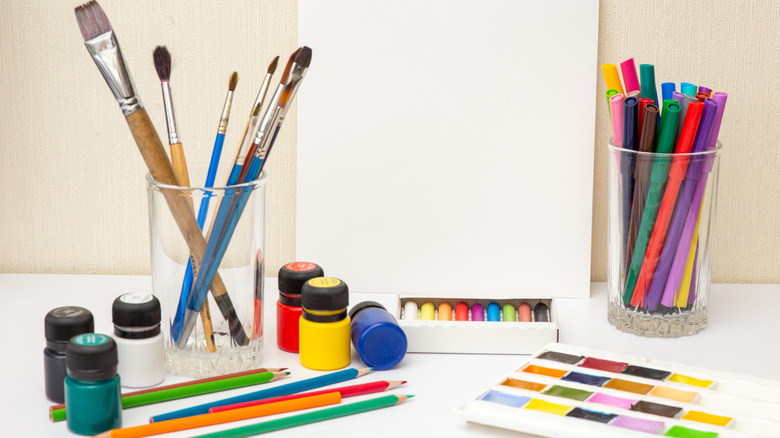How To Declutter Kids' Toys
Is your home overwhelmed with items your family rarely uses? Is every corner filled with toys your kids never get to touch, much less play with, for weeks? No matter how hard you try to organize, your house is always in a mess. If these scenarios seem familiar, the time has come to declutter your place and downsize excessive toy collections.
For most parents, this process is super daunting, considering the number of stuffed animals, Legos, puzzles, and gadgets kids possess nowadays. Even worse, the clutter spills to the living room, as if the gigantic playroom isn't enough.
And if you wonder whether you're alone in this venture, stop worrying. All parents are in the same boat. Kids' interests change often, and as a result, their once-beloved toy might soon rest forgotten under the bed. As children outgrow specific toys, they neglect them, and the odds of getting them back into play are almost nonexistent.
However, the clutter shouldn't dissuade you from investing in educational and high-quality toys. According to Psychology Today, the ways children play will shape their adult identities, skills, and careers. Conversely, too much clutter can confuse your little ones and can make them less focused and curious.
The ultimate solution is to balance both extremes. That's why we've created a handy guide to help you organize your kid's stuff and keep it to a minimum. Consider these practical tips on decluttering children's toys.
Ensure what toys your children prefer
Before delving into your decluttering journey, consider the items that get the most attention. In a few days, you'll probably realize that your kids never touch some toys. This step is vital since you don't want to toss out their favorite gadgets and action figures.
Two or three days of observation will give you an insight into what screams for the trash. Also, try offering the neglected items subtly. If this doesn't work, the time has come to say goodbye. Most kids play with only a few toys, so there's no practical reason to keep the rest.
But if you can't discover what your little rascals like playing with, consider this: Though you may feel all toys are equally appealing, they are not. According to Parents, some trinkets are classics. These include rattles and push toys for toddlers. Other favorites include puzzles, Play-Doh, stacking and building blocks, board games, and crayons.
Try renting toys
To limit the clutter from toy collections in the first place, consider renting. Beyond the savings, you'll soon realize that this strategy makes sense. Why pay the retail price for an item your kid will most likely lose interest in after a few weeks? You can achieve the same effect for a fraction of the cost.
Most importantly, renting is an excellent way to diminish clutter at home. Rental services like Rent That Toy let you swap items regularly and save your valuable storage space. The versatile selection will provide your children with more focused playtime, and they'll never get bored of the choice.
Moreover, The Bragging Mommy writes that renting teaches your little ones vital lessons. They learn about the importance of sharing, and your kids become environmentally conscious and help reduce global waste.
Finally, why not hold a swap-a-toy event? Depending on the group size, you may need to find an appropriate venue for the project. Eartheasy suggests you set some ground rules for the event before the trading — these things can get messy. Also, introduce a credit system for assigning value, and what remains can go to the local charity.
Let everyone at home know you're decluttering
Experienced parents know that tidying up is less tense and challenging when their children aren't present. But, this isn't entirely a wise idea. How will the child feel when they come home and sees that most of their toys have vanished? The process will go much smoother if you alert them of your plans.
Discuss the entire process at the onset. Homeschool Sanity advises teaching kids the importance of neatness at an early age. For instance, give your kids a bag and tell them to put in five toys they want to give away. Be persistent in your intentions and declutter regularly to spare yourself the trouble of explaining yourself every month.
For a sentimental child, you might need to take the longer path. Dedicate more time to teaching the importance of decluttering and organizing. Offering a small incentive like a movie night may also help, according to The Simple Balance. The "out of sight, out of mind" principle is excellent for very emotional children.
Now that you're alone, go for it
Once you settle with your children, ensure you have enough time on your hands to sort out things. It's best to be alone and dedicate at least two spare hours to the process. You may think this is excessive, but assessing each toy is time-consuming, and you'd better not toss a toy you'll regret later.
Having your child meddling around and holding on to items you've agreed to toss can make it impossible to deal with the clutter. But if the kids insist, remind them of the rules and limits you've set earlier.
The process starts by creating a pile of all toys you have in the middle of the room, bearing safety hazards first in mind. According to PediaTrust, removing small and loose parts is critical. Also, remove rusty pieces and plastic toys that aren't sturdy. Another aspect you must pay attention to is the condition of any batteries. Finally, watch out for loose strings, ropes, or cords, as these might endanger the safety of your little ones.
Restrict the amount for each toy category
Have you always allowed your kids to have unlimited collections of their favorite toys? Well, that has to stop right now. If you're serious about your intentions to declutter, make a list with a specific number of items kids can have in each category.
For instance, one child can possess up to 20 cars, 10 plush animals, three balls, and 20 other toys. Another could own up to 10 dolls, 10 plush animals, five makeup or similar sets, and 10 extra items of their choice. The same limit goes for each child, regardless of your family size.
According to a study published in ScienceDirect, toddlers played longer when provided with four toys than a group with 16 toys at their disposal. Also, they had an enhanced focus and played more creatively. Conversely, the 16-toy group had more incidents, and the quality of play was poor. The study also confirmed that children prefer organizational toys made of several components.
Procure 3 baskets
For a seamless experience, you'll need separate bins to organize the clutter. More specifically, start by sorting the pile of toys into three sections. Each item will have to fit in one of the baskets that part their ways once your job is complete. Besides selecting toys, high-quality baskets are an excellent way to store items after you say farewell to the clutter.
An excellent approach would be to label the bins as toss, donate, or keep. The visual separation of clutter will ensure you're on the right path to dealing with the endless mess in the playroom.
Another aspect you must consider is to avoid storing toys in the original packaging, suggests PediaTrust. By doing so, you'll prevent many unintentional cuts, and possibly choking. Chests and baskets should have safe hinges and air holes in case the kid gets trapped inside. Lidless versions are ideal for this purpose.
Organize what you've kept
Though decluttering and organizing in one go may sound appealing, it's not advisable. This dual approach might deter you from the ultimate objective — to eliminate as much clutter as you can. Hence, save the organization step for after you decide what stays and what goes.
Once you set unwanted stuff aside, proceed to tackle the toys that remain. The best approach would be to classify items in sections. This process might also take a few hours, provided you're struggling with a massive pile of stuff. Legos, puzzles, and board games require patience and time to sort and organize. If you feel overwhelmed, take a break, and continue the next day.
An essential step in this journey is the storage area. Though many parents believe bins and containers are a practical solution, Monti Kids disagrees. According to their philosophy, large toy groupings encourage disorganization and disrespect for your belongings.
Don't forget to highlight the event
Rewarding efficiency in the toy decluttering journey is critical. It may seem trivial, but it is a crucial step to fostering organizational skills in the future. What you aim to achieve with the reward system is to encourage your children to keep toys neat from now on.
One idea is to treat the whole family with a custom cake or dessert. Or organize a movie and popcorn night after finishing the chore. Weekly rewards for a clutter-free room are another worthy incentive for your kid.
Kiddos Blog lists several ideas to introduce an effective reward system in the household. Their ingenious hacks include a point system, sticker chart, and piggy bank. Children can also get free-time allowances when they exhibit good behavior. This way, your children learn discipline and responsibility that earn them privileges. Positive reinforcement is always a preferred approach over punishment.
Proceed to donate
So, what do you do with gently-used items you no longer need? The answer is straightforward. You can take them to the nearest charity organization, or call a donation center to pick them up. Some kids may find the parting moment difficult, so in this case, leave the donation basket for a couple of days. It isn't a rare sight for some toys to get back into the playroom.
If this doesn't happen, make a donation plan for the toys in working order. The sooner you give the extra toys away, the better you'll feel, and the clutter will disappear. One of the donation centers to consider is Goodwill. They accept various gently-used games, toys, and sports equipment and resell the items at thrift stores. Raised funds go towards funding their job placement and training programs.
Alternatively, you can donate to Stuffed Animals for Emergencies or the Salvation Army. These organizations support traumatized and disaster-struck, and low-income families, respectively. Remember to prep the items you're donating by following the extensive guide at Grove Collaborative. Depending on the material, stuffed, plastic, and electronic items require a different cleaning approach. Of course, avoid giving away unsalvageable toys.
Get rid of broken and worn toys
Broken items can be challenging to dispose of sustainably. Most donation programs and thrift stores won't accept them. This barrier complicates matters even further, considering approximately 90% of all toys are plastic-made (via Green Matters).
But depending on the plastic resin the toys contain, some municipal programs will reject them. They may also deny toys made of tiny parts that can't be easily separated. Hence, many municipal recycling programs accept only specific sizes and shapes.
Your best shot to find a take-back program is through toy manufacturers. For example, Mattel recovers and transforms their old toys into new products. Its mission is to use 100% recyclable, recycled, or bio-based plastic in its products and packaging.
Another place to turn to is Hasbro's toy recycling program. First, you should create an account, print a free shipping label, and then drop the package off. Hasbro gives new life to old toys and repurposes them as park benches, flower pots, and play spaces. The program's underlying goal is to ensure a sustainable future for all.
Classify items that stay in containers
What you keep must have a specific storage place — in short, set a confined, physical area for toys. Ideas vary from bins and shelving units to a toy-dedicated closet. Every time this space gets full, there is no way to add more things without purging them first.
Though under-bed storage, hanging hammocks, and drawers might seem appealing solutions, Monti Kids is against closed-space storage. The first step towards proper organization is to select toys by use. Next, ensure you have enough trays and shelves to display each toy for better visibility.
A wall rack of toys is another idea that boosts organization in the home. Consider this tip if your kids have an extensive collection of dolls, toy cars, or action figures. Children enjoy choosing playthings and rides and putting them back into little spaces. If you insist on storage bins, pick tilted ones that show what's inside. This way, children will know where to find a specific toy.
Stick to the one in, one out rule
Fortify your toy decluttering intention by establishing a plan for further purchases. Setting boundaries will help you and your kids maintain a tidy home where every item has a designated spot. Any time they express their wishes for a new toy, they'll have to remove some of the used ones.
Try out the following strategy shared by Organizing Your Way. If your child craves a new toy, tell them they must first get rid of an older one. Your kid will probably agree, as they would do anything for that new Lego set. As a result, you'll prevent future chaos and keep the play area organized.
Another hack suggested by Monti Kids that you can put into practice is rotation. Rotating your children's things will ensure they appreciate toys more and spend more quality time with them. You can divide the items into two or three groups and rotate them every three months. The kids will feel they're getting new toys more frequently when you keep a significant portion in storage.
Keep decluttering regularly
One way to keep the clutter to a minimum is to consider the source of the mess. Are you getting too many gifts or hand-me-down boxes? Set some boundaries there. Moreover, tell your kids to clean the room once they've finished playing. Besides reducing your domestic chores, you'll teach them how to be responsible and tidy.
The more often you tidy up, the less distracted you and your home will feel. This Makes That lists several reasons why decluttering is critical for a better life. Besides keeping your place cleaner, regular downsizing decreases stress and anxiety. Moreover, decluttering makes you feel you're in control of your life and helps your family focus on what matters.
Most parents agree that a simplified lifestyle with fewer belongings has liberated their minds and souls. Albert Einstein once said, "Out of clutter, find simplicity," and we can't agree more when it comes to life with little kids.
Open-ended toys are better
Not buying toys too frequently will save your time and money. If your kids insist and you want to make an occasional purchase, consider open-ended toys. Unlike close-ended toys, open ones grow with your children. They encourage kids to be creative and have more than one use.
A few examples of open-ended toys include sensory sand, magnet tiles, art supplies, doll houses, and cars. According to Montessori In Real Life, these toys are ideal for independent play. Plus, kids can use them without limits, and also develop their imagination and creativity. Conversely, close-ended toys teach kids sequencing, focus, cleaning-up, and self-correction.
Both types of toys can enhance problem-solving, language, and social skills. As long as you regulate the number of toys in each category, the benefits will be multifold. More precisely, your kids will learn how to play with purpose, and you'll leave the clutter behind you.
